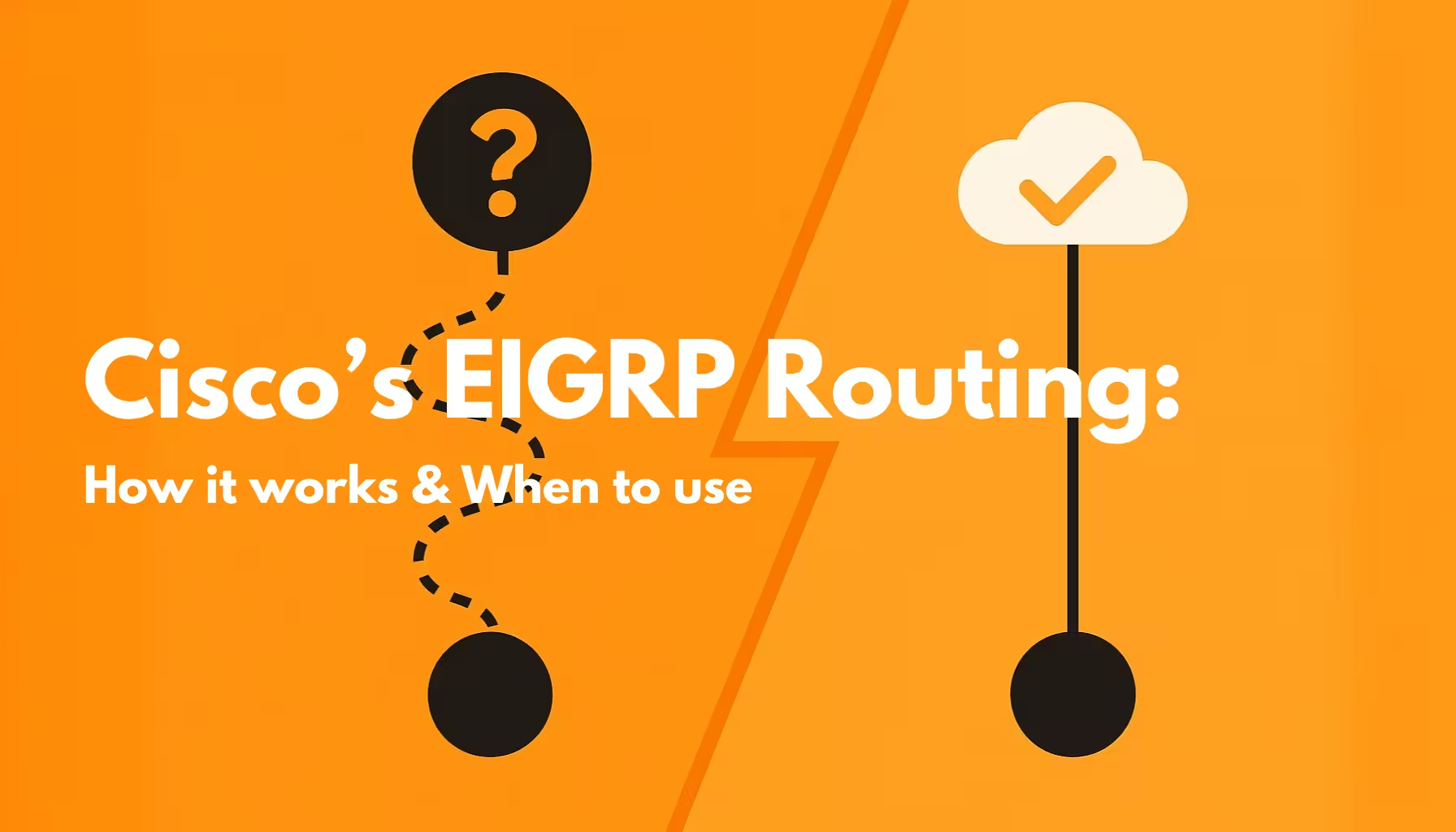Introduction
The Enhanced Interior Gateway Routing Protocol (EIGRP) is one of Cisco’s most influential contributions to network routing. Designed as a hybrid between distance-vector and link-state protocols, EIGRP offers fast convergence, efficient routing, and a simplified configuration model—particularly in Cisco-dominant environments.
In this article, we’ll explore how EIGRP works, how it differs from other routing protocols, where it’s commonly used, and why its relevance is declining in the face of modern, cloud-native networking. We’ll also explain how noBGP rethinks routing for the distributed, multi-cloud era.
What Is EIGRP?
EIGRP is a hybrid dynamic routing protocol developed by Cisco. It combines the simplicity of distance-vector protocols with the speed and control of link-state protocols.
Key Characteristics:
- Uses the DUAL (Diffusing Update Algorithm) for fast loop-free convergence
- Supports VLSM (Variable Length Subnet Masking)
- Performs unequal-cost load balancing
- Exchanges only partial updates (after initial full sync)
Originally Cisco-proprietary, EIGRP was partially opened in 2013 (RFC 7868), but is still primarily used in Cisco networks.
How EIGRP Works
1. Neighbor Discovery
Routers discover neighbors on directly connected networks using Hello packets sent via multicast (224.0.0.10).
2. DUAL Algorithm
DUAL determines:
- Successor: Best path to a destination
- Feasible successor: Backup path, loop-free
3. Metric Calculation
EIGRP uses a composite metric:
- Bandwidth
- Delay
- (Optionally) Load and Reliability
Formula (simplified):
Metric = [10^7 / minimum bandwidth + cumulative delay] × 256
Diagram: EIGRP in Action
[Router A] ↕ [Router B] ←→ [Router C] ↕ ↕ [Destination Network] → EIGRP calculates the best path and a backup (feasible successor) using DUAL
EIGRP Packet Types
| Packet Type |
Function |
| Hello |
Neighbor discovery and keepalive |
| Update |
Routing updates (partial or full) |
| Query |
Request for alternative routes |
| Reply |
Response to a query |
| Acknowledgement |
Confirms receipt of other packets |
EIGRP Configuration Example (Cisco CLI)
Router(config)# router eigrp 100 Router(config-router)# network 10.0.0.0 Router(config-router)# no auto-summary
Router(config-router)# passive-interface default Router(config-router)# no passive-interface GigabitEthernet0/1
AS number 100 groups routers into the same EIGRP domain. The network command defines which interfaces to advertise.
Where EIGRP Is Commonly Used
- Cisco-centric enterprise networks
- Campus LANs with legacy gear
- Point-to-point links with backup paths
- Environments needing fast convergence
Advantages of EIGRP
| Benefit |
Description |
| Fast convergence |
DUAL avoid routing loops and black holes |
| Bandwidth awareness |
Better routing decisions |
| Unequal cost load balancing |
Unique to EIGRP |
| Low overhead |
Sends partial updates only when needed |
| Simple configuration |
Fewwer steps than OSPF or BGP |
Limitations of EIGRP
| Limitation |
Description |
| Cisco-biased |
Limited support on non-Cisco hardware |
| Not suitable for Internet-scale routing |
Lacks policy depth like BGP |
| Proprietary quirks |
Partial standardization limits adoption |
| Still subnet-based |
Requires IP and topology planning |
| Hard to use in cloud |
Not available in AWS/GCP native routing |
EIGRP vs Other Routing Protocols
| Feature |
EIGRP |
OSPF |
BGP |
| Type |
Hybrid |
Link-State |
Path-Vector |
| Convergence Speed |
Fast |
Fast |
Slow |
| Vendor Neutral |
Cisco |
Yes |
Yes |
| Metric |
Composite |
Cost (BW) |
Policy-Based |
| Best Use Case |
Cisco LANs |
Multi-vendor |
Internet |
EIGRP in a Cloud-Native World
Most public cloud environments:
- Do not support EIGRP
- Offer static route tables
- Require IPsec or VPN to simulate routing
As workloads shift to containers, Kubernetes, and ephemeral services, the IP-based assumptions of EIGRP don’t scale. Dynamic cloud-native networking needs policy and identity, not route summarization and DUAL metrics.
How noBGP Replaces Traditional Routing
noBGP eliminates the need for IP-based dynamic routing protocols like EIGRP by offering a new routing model based on identity and policy.
How noBGP Transforms Routing:
- No subnets or prefixes required
- Route by identity, not IP ranges.
- Instant connectivity
- No neighbor discovery, no AS numbers, no timers.
- Built for modern environments
- Works across clouds, containers, bare metal, and edge.
- No vendor lock-in
- Cloud-native and protocol-agnostic.
- Built-in encryption and policy
- No need for additional overlays like IPsec or ACLs.
Summary: EIGRP vs noBGP
| Feature |
EIGRP |
noBGP |
| Routing Method |
Hop-by-hop (DUAL) |
End-to-end, policy-based |
| Subnet Planning |
Required |
Not needed |
| Platform Compatibility |
Mostly Cisco |
Cloud, K8s, edge, on-prem |
| Convergence |
Fast |
Instant |
| Multi-cloud support |
No |
Yes |
| Security |
External (ACL/IPsec) |
Built-in encryption |
Final Thoughts
The EIGRP routing protocol helped usher in faster, more scalable enterprise networks—especially for Cisco shops. But in today’s world of dynamic, distributed, cloud-native workloads, EIGRP’s IP-based assumptions no longer hold.
noBGP is the evolution of routing.
It replaces topology-bound metrics with service-aware policy, eliminates route tables, and gives you control across any infrastructure.
You don’t need to tweak timers or calculate metrics anymore.
You just define who should talk to whom—and it works.
